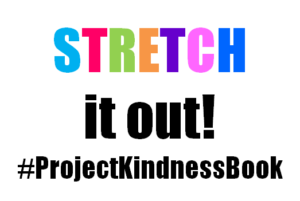Burn v. Pain & Stretching
Exercising is great, but one important thing to realize about exercising is that there are times when you should keep going and times when you should stop and days when you should take the day off and days when you should push through.
Often times, people feel burning sensations in their muscles when they are exercising. I hear this frequently from people actually. Burning sensations while exercising (not pain) are completely normal and mean you are pushing your body and muscles during your workout. When your muscles and body get past the point of burning and feel pain then it is time to stop. You should not be exercising if your muscles and body hurt or you feel pain. Exercising should not hurt or evoke pain, AND yes, I will repeat that again…exercise should NEVER be painful or hurt. Burn, yes. Burn that leads to soreness, yes to that, too. In fact, I encourage you to exercise until you feel the burn in your muscles to maximize your results. Short, intense periods of heavy cardio and exercise are great for you. This may create sore muscles later in the evening and the next day because of the burning sensation that your muscles feel, but this is normal and actually good for you. If you can’t walk the next day from soreness, then you probably felt the burn at some point during your workout ;-)! I stress though that you should NOT be in pain. Pain is not something that should be associated or linked to exercise. Exercise is a pleasurable, stress reducer, not a pain inducer! 🙂
Where does stretching come in? To help alleviate soreness from exercising, remember to stretch, stretch, and then stretch some more. Stretching is one of the most essential and beneficial ways to not only warm your body and muscles up, but to increase your flexibility and therefore push your exercising capabilities even farther. Stretching is something that is easy. It is also one of the BEST things you can do for yourself to progress through workouts so that you can challenge yourself and get better. The more flexible you are, the better. This is because the strength you gain from stretching and increasing your flexibility will allow you to push through your workout and workout even longer. With the above discussion of pain in mind, stretching out before and after your workout will help ease soreness, prevent pain, and allow you to hold exercises longer when you feel burning.
If you aren’t convinced stretching is as great as your actual workout, you should think again! It will help wake your mind and body up before you hit the intense part of your workout. I stretch as soon as my feet hit the floor in the morning. It’s one of the best things I can do for myself to help wake up. I touch my hands to my toes to stretch my back muscles, and touch my feet to my butt to stretch my legs and thighs. Nothing too crazy or over the top, but simple exercises to help get me going. The same can be seen as I go throughout the day. I frequently stretch 4 or 5 times a day because it helps loosen up my body, destress, and makes me feel refreshed in as little as 2-10 minutes! How awesome is that?!
So, start thinking about what your body is telling you whether you feel pain or burning and remember that stretching is a great way to prevent soreness from exercise. I say, get STRETCHING! 🙂
~jj

